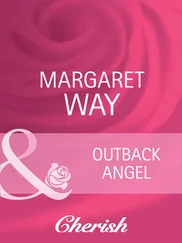David Kessler - No Way Out
Здесь есть возможность читать онлайн «David Kessler - No Way Out» — ознакомительный отрывок электронной книги совершенно бесплатно, а после прочтения отрывка купить полную версию. В некоторых случаях можно слушать аудио, скачать через торрент в формате fb2 и присутствует краткое содержание. Жанр: Триллер, на английском языке. Описание произведения, (предисловие) а так же отзывы посетителей доступны на портале библиотеки ЛибКат.
- Название:No Way Out
- Автор:
- Жанр:
- Год:неизвестен
- ISBN:нет данных
- Рейтинг книги:5 / 5. Голосов: 1
-
Избранное:Добавить в избранное
- Отзывы:
-
Ваша оценка:
- 100
- 1
- 2
- 3
- 4
- 5
No Way Out: краткое содержание, описание и аннотация
Предлагаем к чтению аннотацию, описание, краткое содержание или предисловие (зависит от того, что написал сам автор книги «No Way Out»). Если вы не нашли необходимую информацию о книге — напишите в комментариях, мы постараемся отыскать её.
No Way Out — читать онлайн ознакомительный отрывок
Ниже представлен текст книги, разбитый по страницам. Система сохранения места последней прочитанной страницы, позволяет с удобством читать онлайн бесплатно книгу «No Way Out», без необходимости каждый раз заново искать на чём Вы остановились. Поставьте закладку, и сможете в любой момент перейти на страницу, на которой закончили чтение.
Интервал:
Закладка:
David Kessler
No Way Out
Saturday, 4 July 2004 — 23:40
It was only a set of fingers flying across a keyboard, yet they could work so much malice.
She watched in awe as her words appeared before her, the letters on the screen keeping pace with her fingers. What was so amazing was how little she had to change to wreak so much damage. All she had to do to alter the behavior of an entire computer program was make minor alterations to just two of the lines of the coding and then switch two of the other lines around. Hackers and “midnight programmers” would laugh at the absurd simplicity of it. Some of them might even have been mildly amused by the sheer audacity of it. But few of them would have condoned her objectives. Most hackers tended to be free-wheeling libertarians, not embittered racists. And she wasn’t even trained as a computer programmer, apart from one short online course she had taken recently.
But the irony went deeper than that.
Everyone knew the old cliche that you can radically change the interpretation of a contract by an ambiguous pronoun or the meaning of a statute by a harmless-looking punctuation mark. In England a diplomat and humanitarian called Roger Casement was said to have been “hanged by a comma” after he was found guilty of treason under a medieval statute. But who would have believed that the same was true of a computer program? And the biggest irony of all was that she couldn’t tell anyone — like the criminal who commits the perfect crime and wants to brag about it to others, but can’t, because if he tells other people, then the crime would no longer be perfect!
But so what?
She wasn’t doing it for fame or glory. She was doing it for justice — plain, old-fashioned justice.
As she continued her work, she glanced up and looked out through the window. In the distance she could see the flickering lights of the nocturnal city. It reminded her that there was a world out there beyond her private world of vengeance. But she forced herself to ignore the distraction. Her fingers continued to dance across the keyboard in the small pool of halogen light that fell upon the desk. The rest of the room was in darkness.
After a few more seconds of work, she paused, satisfied with the results of her labors. Then, with a couple of clicks on the left button of the mouse, she selected a menu item called “build.” This action inaugurated a two-stage process known to computer programmers as “compiling” and “linking.” It was this process that actually created the finished computer program. By the time forty eight seconds had elapsed, she had created a new version of the program.
And what a new version!
She thought about it now, almost wistfully. Getting the original source code had been rather tricky. She’d had to use some of her old contacts to break down the bureaucratic barriers. But many States had public records or freedom of information laws. She wished that she could infiltrate the altered program everywhere . That would be something of a coup! But she had to be realistic.
When she first started out, she had no idea that she would even be able to do it. It was more idle curiosity than a firm agenda that had prompted her to explore the possibility. But when she studied the documentation and asked a few questions of a professor to understand how the software worked, it suddenly dawned on her just how easy it would be.
Of course, slipping it in undetected would be the hardest part. There were various ways she could do it. One way was to hack into the server computers and upload the new program. But that was risky. The fact that an organization maintained a server that was accessible from outside did not necessarily mean that it was vulnerable. Interactive websites were usually protected by strong firewalls.
There was, however, another way to infiltrate the new version of the software that didn’t involve direct use of the internet at all — social engineering. The trick was to get the systems administrators to install it themselves . The key to this method was to make it seem as if it were a modification of a current program that they were already using. By packaging the program complete with forged letterhead, printing on the DVD surface, throwing in some fancy multicolor process-printed documentation and then sending it out by special courier, she could trick their Systems Administrators into installing the new version under the erroneous assumption that they were getting an upgrade from the software company.
It would be the ultimate software hack followed by the ultimate in social engineering.
But what was the new program? It was not one of those so-called “Trojan horses.” Neither was it a virus that could replicate itself. Nor yet was it a trap-door that would enable her to get into the system later. Indeed, once inserted into the system it would simply do its work.
And now she was going to make the niggers pay!
JUNE
Friday, 5 June 2009 — 7:30
Bethel was nineteen — too young to remember the Sixties and too bored to care about her grandparents’ reminiscences — like how her mother was conceived at the Woodstock festival.
Pathetic!
But the sound of Buffalo Springfield’s For What it’s Worth was ringing through her head, via the earphones of her iPod, as she stood by the roadside, waiting for help.
She knew little of the context of the song and nothing about the closing of the Pandora’s Box nightclub or the Sunset Strip Curfew Riots. But the voice of Neil Young was haunting. It was easy to sleep through high school civics classes — even to sleepwalk through the assignments and exams. She knew a bit about the Vietnam war and the civil rights struggles of the Sixties. But it was all superficial academic knowledge, of the kind she picked up almost by default while daydreaming about the proverbial football team quarterback.
It stayed in her mind not as a coherent picture, but as a collection of sound bites: “We shall overcome,” “I have a dream,” “Power to the People,” “Burn baby Burn!” The voice of anger still echoed across the decades. But it echoed faintly. A time-gulf separated Bethel from the turbulence that had almost ripped her country apart. And the time-gulf was ever widening, so all that was left of the ringing timbre of history’s voices were the fading reverberations of barely-remembered heroes. Rosa Parks, Martin Luther King, Malcolm X, the Chicago Eight. Names and slogans to Bethel, but no substance… except, perhaps, the occasional substances she used to take her mind off the boredom of academic learning.
But she liked the song.
It had a pleasant hook to it that made it stick in her mind. What really sent shivers up her spine was that haunting phrase at the end of chorus, urging the young listeners to pause and assess the situation. She had no more than the merest inkling of what it meant. Whatever it was, had “gone down” long ago.
It doesn’t really matter , she told herself. It belonged to her grandparents’ generation anyway. She belonged to another generation, the one that was more concerned with finding a job than changing the world. Bethel had known her own personal share of hardship in life, but it had been an exceptional episode and not something that affected others of her generation.
Her full name was Bethel Georgia Newton and she was a mixed bag of human elements. In the looks department she was all bleached blonde and classic cheerleader figure: a carefully cultivated complexion and polished-tooth smile. Neither svelte, nor-buxom, a kind of perfect “in-between” for her 5’6”, athletic, but in that soft, not-overdone sort of way, with well-toned leg muscles, but not rippling ones. On the socio-economic side she was middle class and far removed from the culture of the street, the stoop or the ‘hood. Yet when it came to experience of life she wasn’t entirely naive. She might not exactly have been streetwise, but she had tasted the bitter taste of life.
Читать дальшеИнтервал:
Закладка:
Похожие книги на «No Way Out»
Представляем Вашему вниманию похожие книги на «No Way Out» списком для выбора. Мы отобрали схожую по названию и смыслу литературу в надежде предоставить читателям больше вариантов отыскать новые, интересные, ещё непрочитанные произведения.
Обсуждение, отзывы о книге «No Way Out» и просто собственные мнения читателей. Оставьте ваши комментарии, напишите, что Вы думаете о произведении, его смысле или главных героях. Укажите что конкретно понравилось, а что нет, и почему Вы так считаете.












